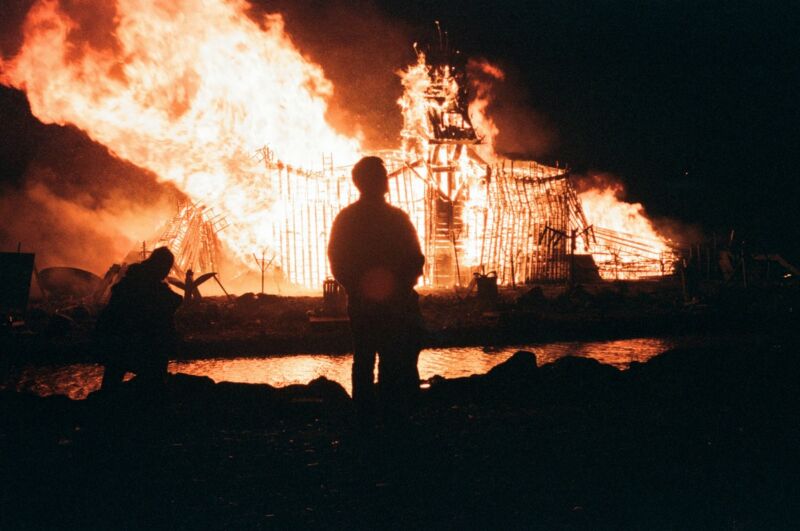
Enlarge / "Remember, remember the fifth of November": a 1997 Bonfire Night in Skinningrove, North Yorkshire, England, commemorating Guy Fawkes and The Conspiracy of the Powders plot to blow up the English Parliament and King James I. (credit: Teesside Archive/Mirrorpix/Getty Images)
Tonight, people in Great Britain will celebrate Guy Fawkes Day with bonfires and elaborate fireworks displays across the country, which is why it's also known as Bonfire Night. The downside of the festivities is that the combination temporarily pours a lot of extra particulates into the air. This is known to have an adverse effect on visibility, but scientists also suspected that elevated levels of soot that accumulates from the annual bonfires could contribute to creating ice in clouds. According to a new paper published in the Journal of Geophysical Research: Atmosphere, this doesn't seem to be the case.
For those not familiar with this British celebration, Guy Fawkes was a member of the infamous Gunpowder Plot of 1605, whose Catholic members conspired to blow up the British House of Lords in an attempt to assassinate the Protestant King James I. Fawkes was caught guarding the cache of explosives, and the public celebrated the king's survival by lighting bonfires. Fawkes and his fellow conspirators were executed the following January. Just days before the executions, Parliament passed the Observance of 5th November Act (aka the "Thanksgiving Act"), making the day an annual celebration.
Originally marked by extreme anti-Catholic sentiment, the nature of the celebrations evolved over the centuries. It eventually became common practice to burn Guy Fawkes in effigy—a practice memorably depicted in the climax of a season 3 episode of the BBC's Sherlock Holmes series ("The Empty Hearse"), in which Holmes and Watson foil a modern-day plot to finish what the Gunpowder Plot had started.
No comments:
Post a Comment